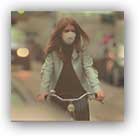|
WExposure to air pollution on city streets is enough
to counter the beneficial health effects of exercise
in older adults, according to new research.

Led by scientists from the MRC-PHE Centre for
Environment and Healthopens in new window at
Imperial College London and King's College London,
the study, published in The Lancet, recruited 119
volunteers over the age of 60 through the Royal
Brompton Hospital, who were either healthy, had
stable chronic obstructive pulmonary disease (COPD),
or stable heart disease.
The volunteers walked for two hours in two London
settings at midday: in a relatively quiet part of
leafy Hyde Park and along a busy section of Oxford
Street, which has regularly breached air quality
limits set by the World Health Organization.
Physical measurements were taken before and after
the walks to show the effects of the exercise on
cardiovascular health, including measurements of
lung volume exhaled, blood pressure, and the degree
to which their blood vessels could expand.
Analysis revealed that all participants benefitted
from a stroll in the park, with lung capacity
improving within the first hour and a significant
lasting increase for more than 24 hours in many
cases.
By comparison, a walk along Oxford Street led to
only a small increase in lung capacity in
participants, far lower than recorded in the park.
Blood flow also increased after exercise, with
decreases in blood pressure and an increase in heart
rate.
Arteries became less stiff in those walking in Hyde
Park with a maximum change from baseline of more
than 24% in healthy and COPD volunteers, and more
than 19% in heart disease patients.
This effect was drastically reduced when walking
along Oxford Street, however, with a maximum change
in arterial stiffness of just 4.6% for healthy
volunteers, 16% for those with COPD and 8.6% for
heart disease.
Professor Fan Chung, senior author from the MRC-PHE
Centre for Environment and Health, and the National
Heart & Lung Institute at Imperial College London,
said: “These findings are important as for many
people, such as the elderly or those with chronic
disease, very often the only exercise they can do is
to walk.
Our study suggests that we might advise older adults
to walk in green spaces, away from built-up areas
and pollution from traffic."
“It is possible that studies such as this could
support new air quality limits, it shows that we
can't really tolerate the levels of air pollution
that we currently find on our busy streets.
For people living in the inner city, it may be
difficult to find areas where they can go and walk
away from pollution, there may be a cost associated
as they have to travel further away from where they
live or work.
These are issues that mean we really need to reduce
pollution by controlling traffic.
That should allow everyone to be able to enjoy the
health benefits of physical activity in any urban
environment.”
The authors add that it is possible that stress
could account for some of the physiological
differences seen between the two settings, with the
increased noise and activity of Oxford Street having
an effect.
They also emphasise that while the study only
involved two relatively short walks, the findings
suggest that repeated exposures to air pollution
would not be beneficial to our respiratory and
cardiovascular systems.
For more information
The Lancet
Respiratory and cardiovascular responses to walking
down a traffic-polluted road compared with walking
in a traffic-free area in participants aged 60 years
and older with chronic lung or heart disease and
age-matched healthy controls: a randomised,
crossover study
Link...
The Medical Research Council (MRC)
Link...
Imperial College London
Link...
King's College London
Link...
MDN |